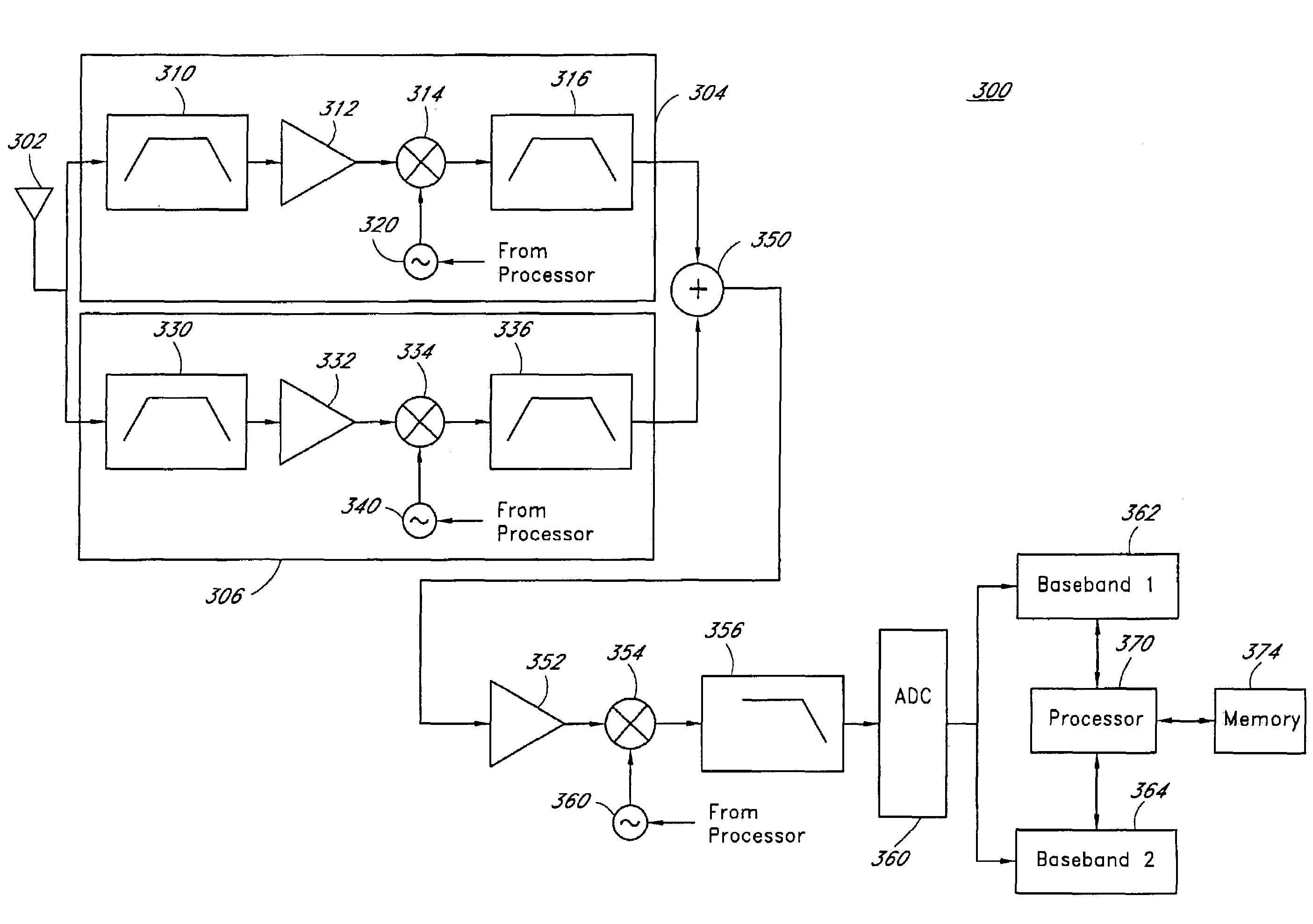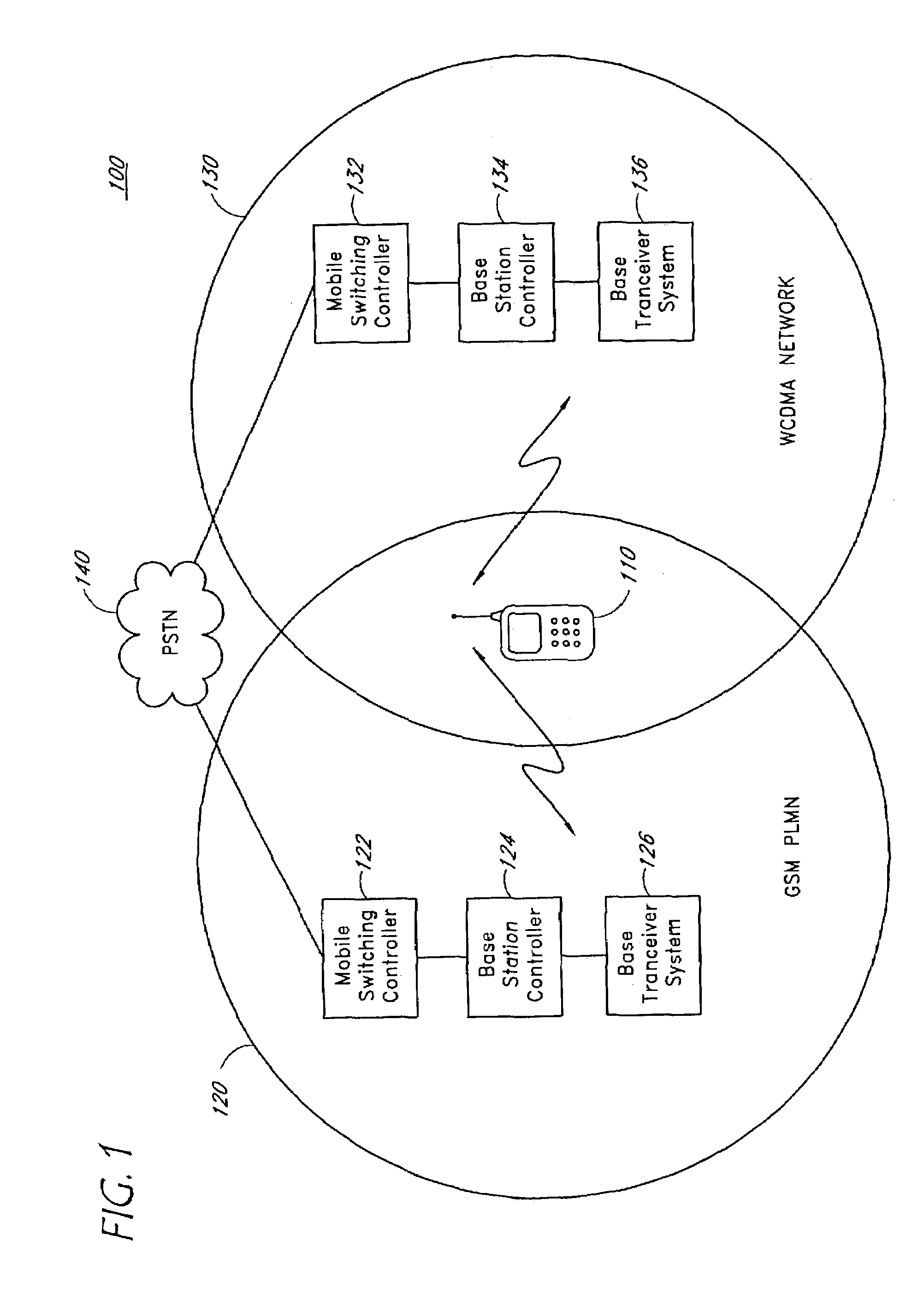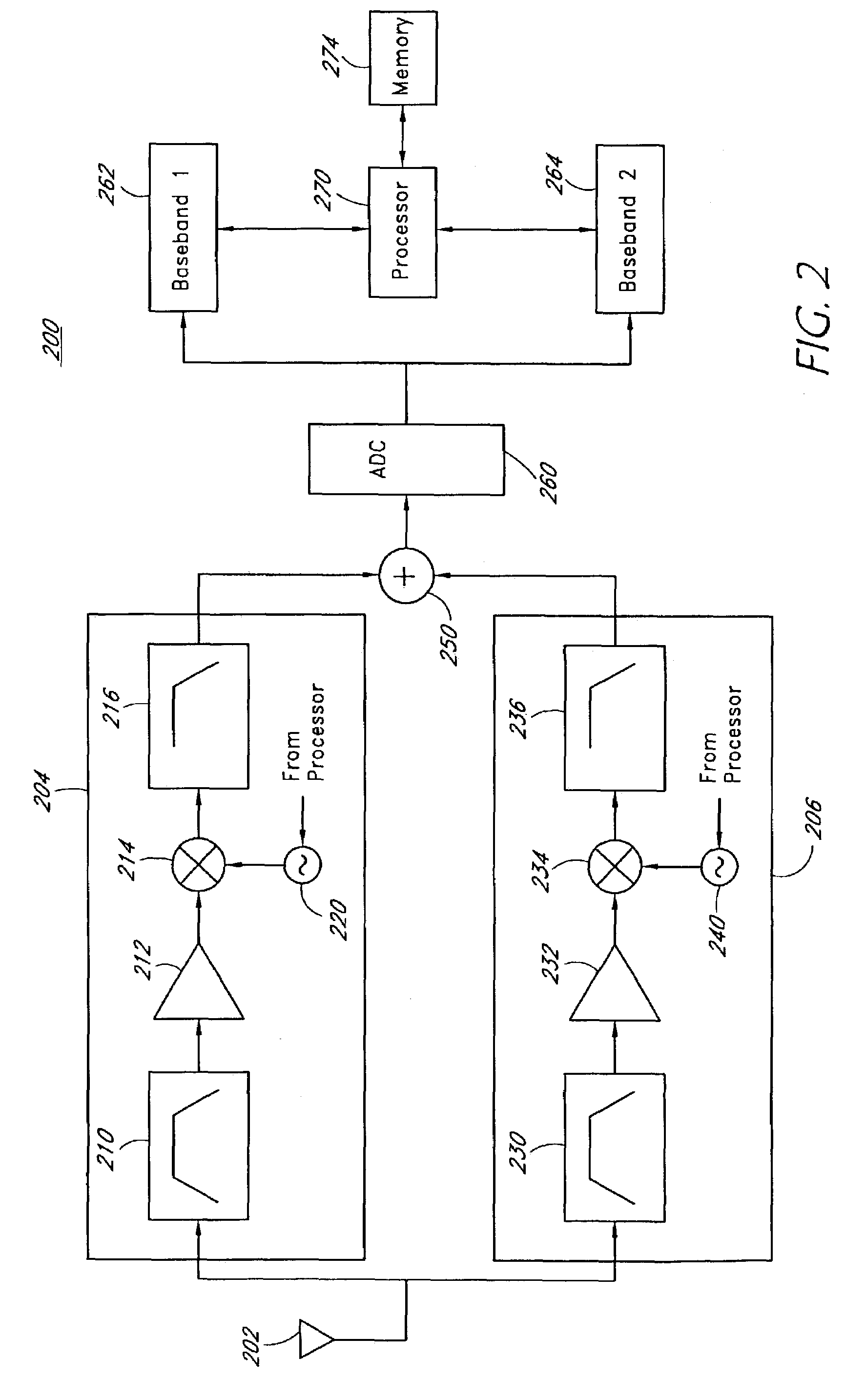Shared receive path for simultaneous received signals
a shared receive path and signal technology, applied in telephonic communication, substation equipment, electrical equipment, etc., can solve the problems of difficult for a single device to operate in more than one communication system, and inability of wireless devices to remain in the first operating mod
- Summary
- Abstract
- Description
- Claims
- Application Information
AI Technical Summary
Problems solved by technology
Method used
Image
Examples
Embodiment Construction
[0022]A method and apparatus configured to simultaneously receive multiple signals using a shared receive path are disclosed. Using the method or apparatus, a WCDMA signal may be received and converted to a WCDMA baseband signal. Simultaneously, a GSM signal may be received and converted to a GSM baseband signal. At least a portion of the bandwidth occupied by the WCDMA baseband signal overlaps a portion of the bandwidth occupied by the GSM baseband signal. The two baseband signals are then combined into a combined baseband signal. A first baseband processor operates on the combined signal to extract information from the WCDMA signal component of the combined signal. Similarly, a second baseband processor operates on the combined signal to extract information from the GSM signal component of the combined signal. Accordingly, devices implementing the apparatus can simultaneously receive both GSM and WCDMA signals and therefore easily handoff between base stations operating in differe...
PUM
 Login to View More
Login to View More Abstract
Description
Claims
Application Information
 Login to View More
Login to View More - R&D
- Intellectual Property
- Life Sciences
- Materials
- Tech Scout
- Unparalleled Data Quality
- Higher Quality Content
- 60% Fewer Hallucinations
Browse by: Latest US Patents, China's latest patents, Technical Efficacy Thesaurus, Application Domain, Technology Topic, Popular Technical Reports.
© 2025 PatSnap. All rights reserved.Legal|Privacy policy|Modern Slavery Act Transparency Statement|Sitemap|About US| Contact US: help@patsnap.com



